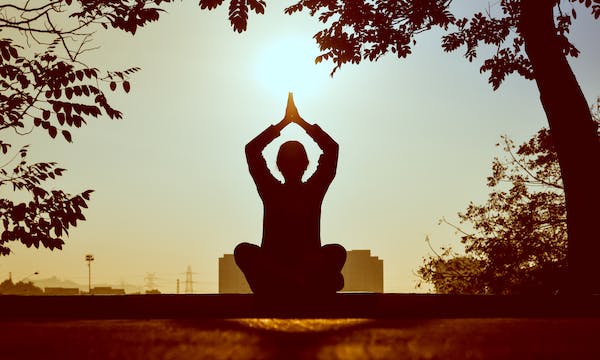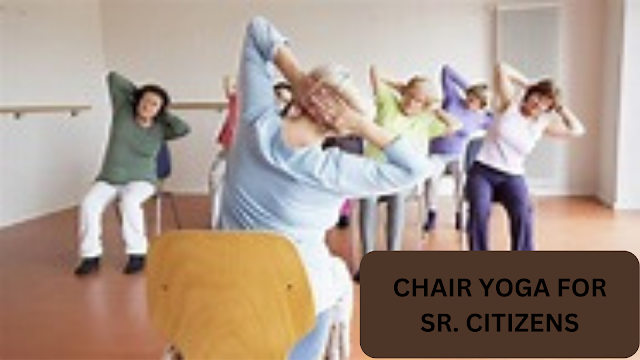Introduction to Health Care Yoga
In
today's fast-paced world, people are in search of their holistic wellness which
led to a revival of ancient yoga practices to take care of both physical and
mental health. Among these, Health Care Yoga stands out in the front position of
mental and physical well-being. This integrated approach to Health Care Yoga combines
traditional yoga practices with modern healthcare objectives, offering a
unique blend of ancient yoga practices with contemporary individual needs.
Health Care Yoga: A Historical Perspective
Yoga,
with its origin in ancient India, has long been recognized for its extensive
health benefits. However, the concept of Health Care Yoga is a relatively
modern development. In the year 2014, the Hon’ble Indian Prime Minister, Mr.
Narendra Modi approached the United Nations to celebrate International Yoga Day
on 21st June since this day is the longest day in the Northern
Hemisphere. Thereafter, this Health Care Yoga got an impetus and gave a
tremendous jolt to people throughout the world towards this form of healthcare practice. This evolution has been driven by a deeper understanding of yoga's
potential to take care of modern health issues, from stress and anxiety to
chronic physical conditions.
Health
Care Yoga offers a score of physical health benefits. Through a number of Yoga
postures (asanas), breathing exercises (pranayama), and meditation techniques,
it aims to improve flexibility, strength, and balance in mind. Out of these, it
also plays a crucial role in promoting cardiovascular health issues, reducing
chronic pain, enhancing respiratory function, and boosting the immune system.
This holistic approach ensures that practitioners not only get immediate
benefits but also lay the foundation for long-term health and vitality and
thereby avoid frequent Doctors visit.
Mental and Emotional Development through Health Care Yoga
The
benefits of Health Care Yoga also extend far beyond the physical benefits. It is
pertinent to mention here that it can improve mental and
emotional well-being. Regular practice of yoga, through a well-trained Yoga
Teacher, helps in managing stress, reducing symptoms of anxiety and depression,
and developing a sense of inner peace. The mindfulness in yoga practices
encourages the practitioners to stay present and cultivate a deeper connection
with their inner self, leading to improved self-esteem and emotional resilience
as well as community development.
Health Care Yoga in Modern Medicine
The
combination of Health Care Yoga with modern medicine is playing a significant role
in overall health care. Many Researchers and Health Care professionals have now
recognized yoga as an effective tool of therapy for a wide range of ailments
like heart disease, diabetes, and mental health disorders. Hospitals and health
clinics increasingly offer yoga programs as part of their treatment plans,
highlighting their value in patient care and early recovery.
Regular Practice of Health Care Yoga
Health Care Yoga involves more than attending regular classes; it has embraced the principles
of yoga into everyday life. This includes practicing mindfulness, adopting a
healthy diet, and developing a consistent yoga routine fitted to individual
health needs. Whether it may be attending Yoga classes, online tutorials, or
personal practice, making Yoga a part of one's daily routine which lead to
profound changes in health and well-being.
Challenges and Considerations in Health Care Yoga
While
Health Care Yoga offers numerous benefits, it's important to adopt Yoga with awareness. Individuals with certain health ailments should consult with healthcare
professionals before starting Yoga practices. Additionally, I may advise the
practitioners to find a trained instructor who can advise the posture to be
practiced which will align with one's health ailment need which is crucial for
a safe practice.
Read More : Importance of Yoga Asanas
The Future of Health Care Yoga
As
research continues to recognize the extensive benefits of yoga, its integration
into health care is expected to deepen. This could lead to more personalized
yoga therapies, greater accessibility through healthcare systems, and a
broader recognition of its role in preventive medicine. The future of Health
Care Yoga looks promising, with potential advancements that could further
revolutionize the way we approach health and wellness.
Conclusion:
In
my practical experience, it is pertinent to mention here that I was suffering
from Piles for a long time. Initially, I consulted a Homeopathic Doctor who
advised me to change my lifestyle and take vegetarian food along with his
prescribed medicine. After two to three months, this does not help me to
recover. Thereafter, I visited an Allopathic Doctor who advised me to have an operation.
I was scared a lot. Some of my friends advised me to approach a healthcare Yoga
practitioner. I consulted a renowned Health Care Yoga practitioner, and he advised me to change my lifestyle and eat vegetarian food and plenty of water. Along with
these, he taught some Yoga Postures. By sincerely adopting his advice, I
started the Yoga practice along with the change in lifestyle. Now, I am fully cured and still continuing his advice.
From the above, I may mention that Health Care Yoga is a powerful tool to improve holistic health, blending ancient wisdom with modern healthcare practices. By offering a comprehensive approach that benefits the body, mind, and spirit, it provides a path to improved health, well-being, and quality of life. As modern society continues to adopt the principles of Health Care Yoga, we move closer to a world where overall wellness is not just an aspiration but a reality.
FAQ:
01. Is Health Care Yoga being useful? Health Care Yoga is being extensively used throughout the world. The Doctors and Health Care Professionals are referring to practice for early recovery from their ailments.
02. Dose Yoga Improve Heart Health? Regular Yoga practice can arrest heart ailments by reducing stress and inflammation. Yoga can also help to arrest High Blood Pressure and increase body weight which are important factors of Heart Health.
03. Is it advisable to practice Yoga with High Blood Pressure? Yoga practice for high BP patients should regularly practice Yoga because it expands the Blood vessels thereby reducing the High Blood Pressure. Regular Yoga practice reduces body weight by the fat-burning process.
04. What are the important benefits of practicing Yoga? Yoga practice has multi-dimensional benefits. Out of these, the most important is it increases strength flexibility, and balance.
05. Can Yoga give relief from back pain and arthritis? It is worthwhile to mention here that the American College of Physicians recommends Yoga as the first-line treatment to get rid of chronic Back pain and gentle Yoga practice has shown marked improvement for Arthritis patients.
.jpg)

.jpg)
.jpg)

.jpg)
.jpg)
.jpg)
.jpg)
.jpg)